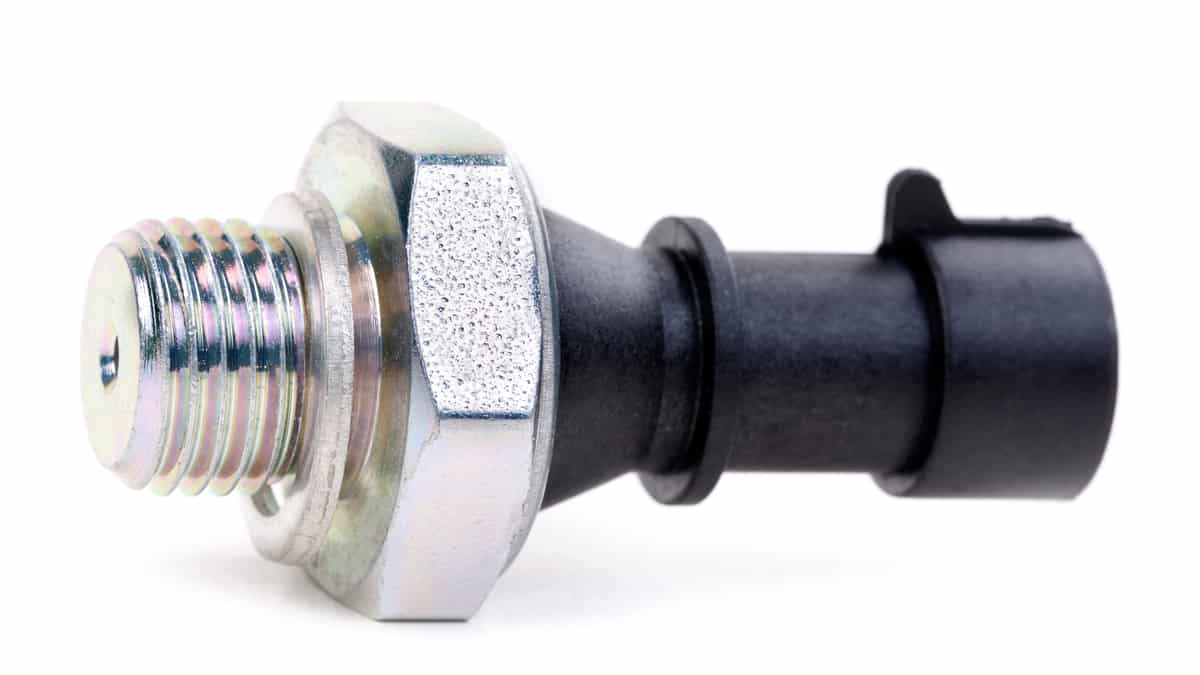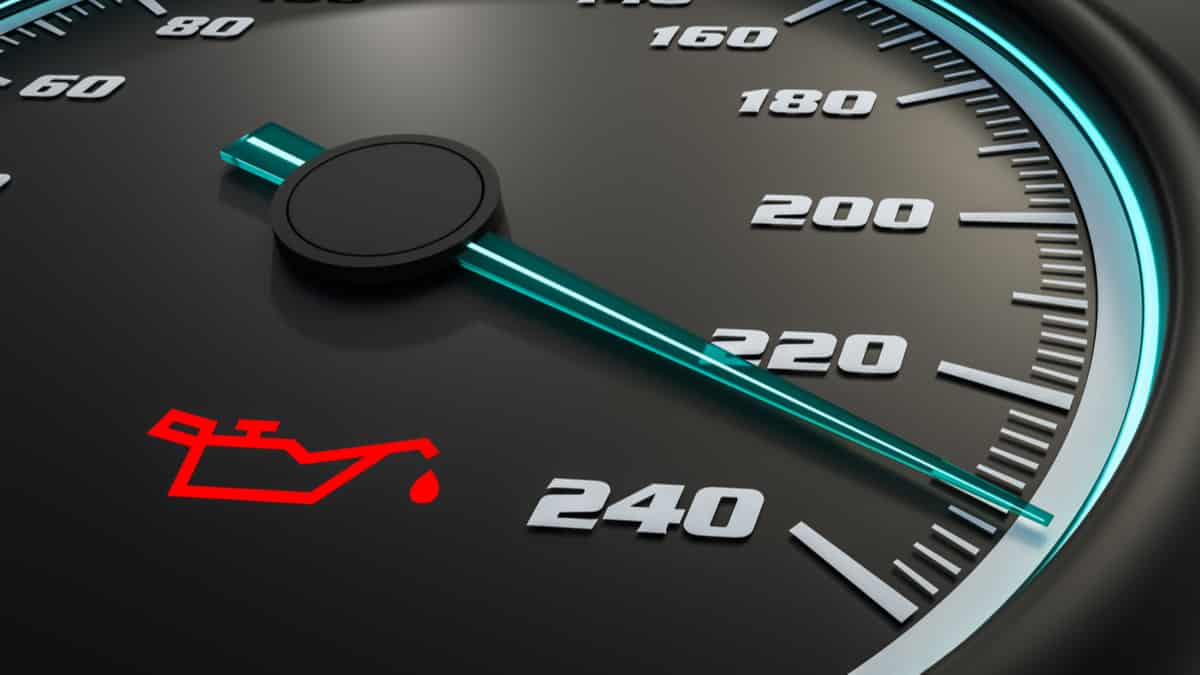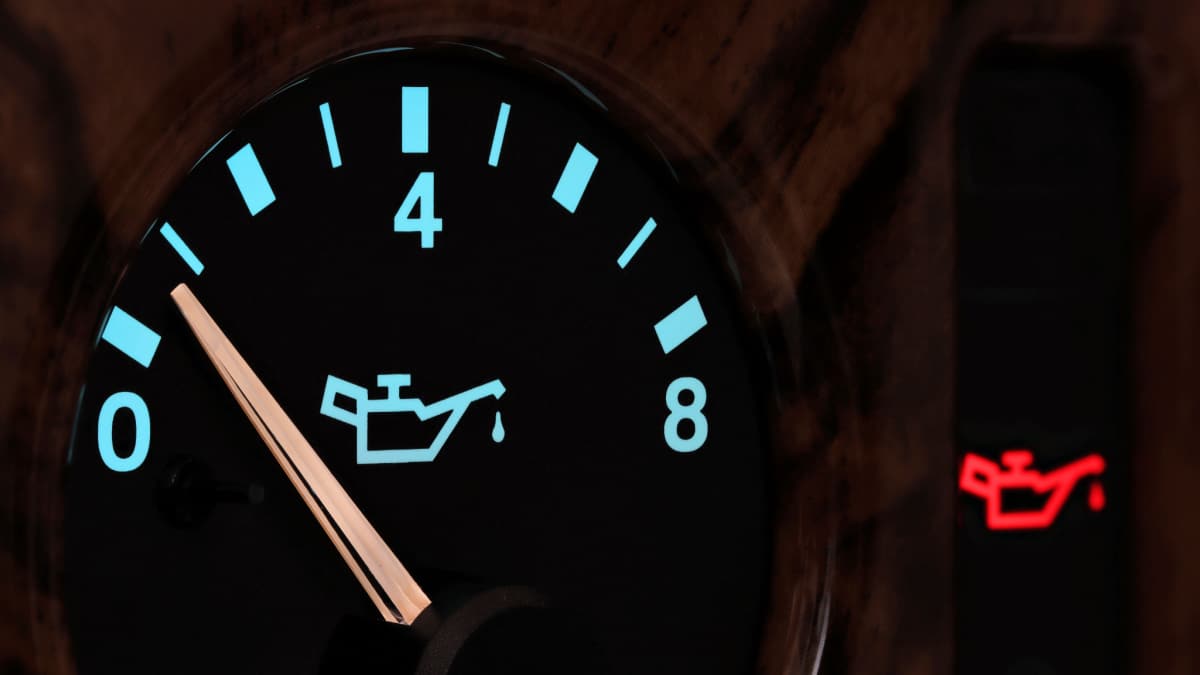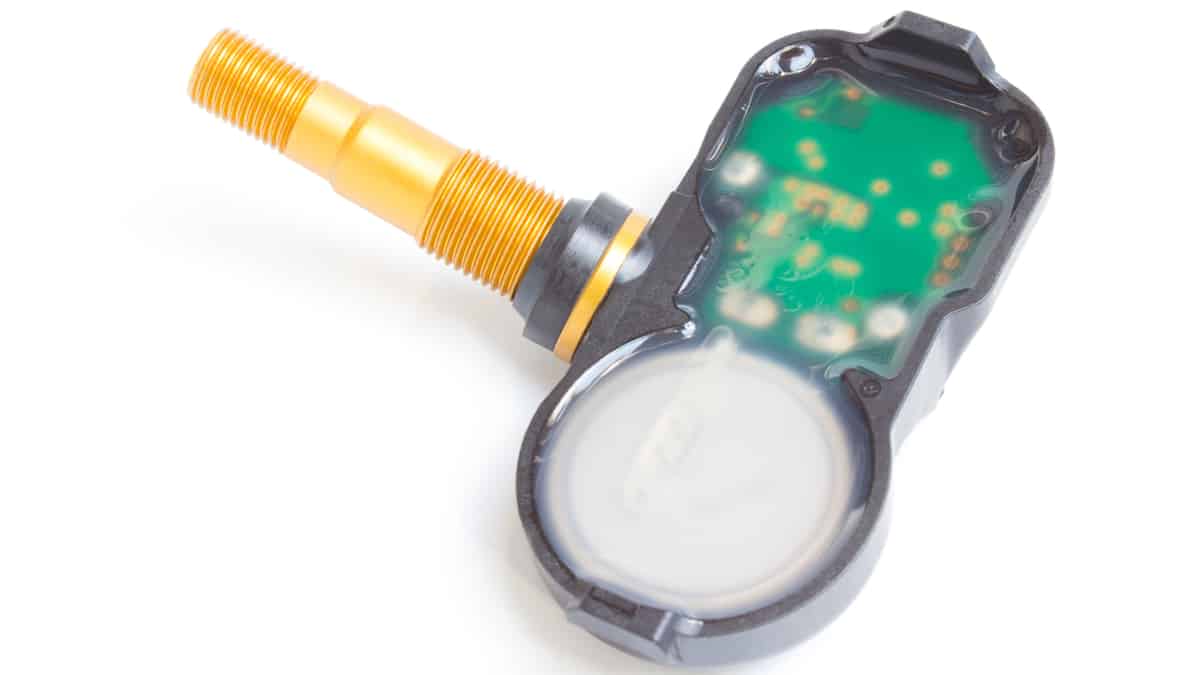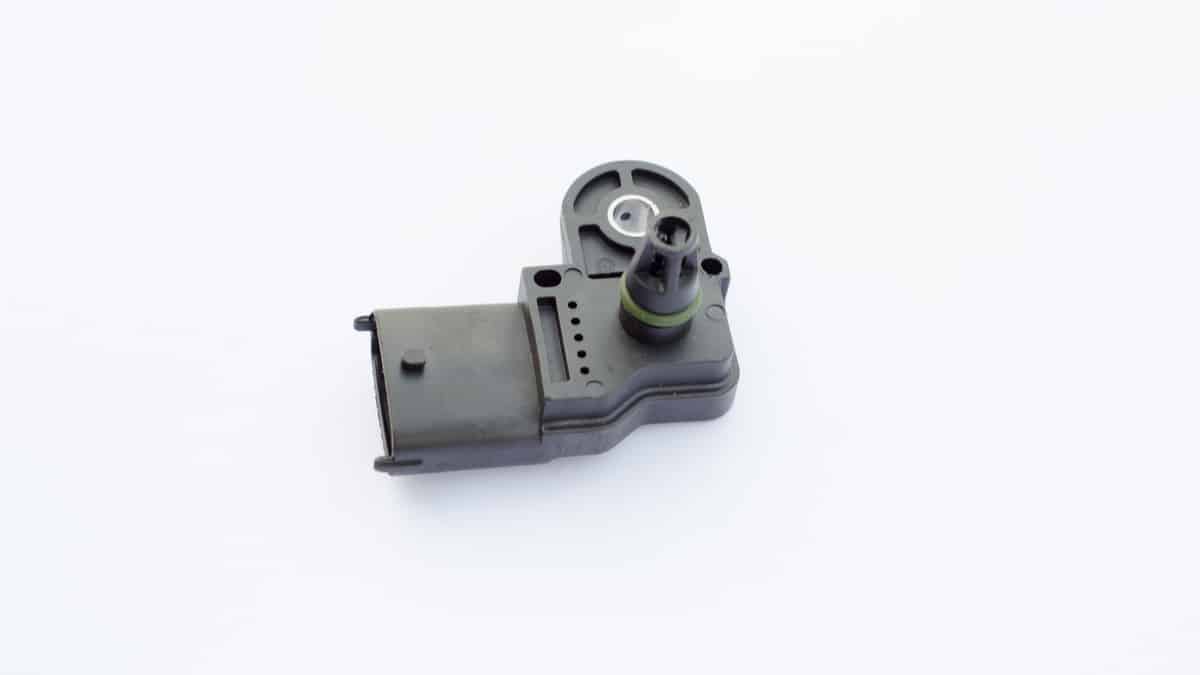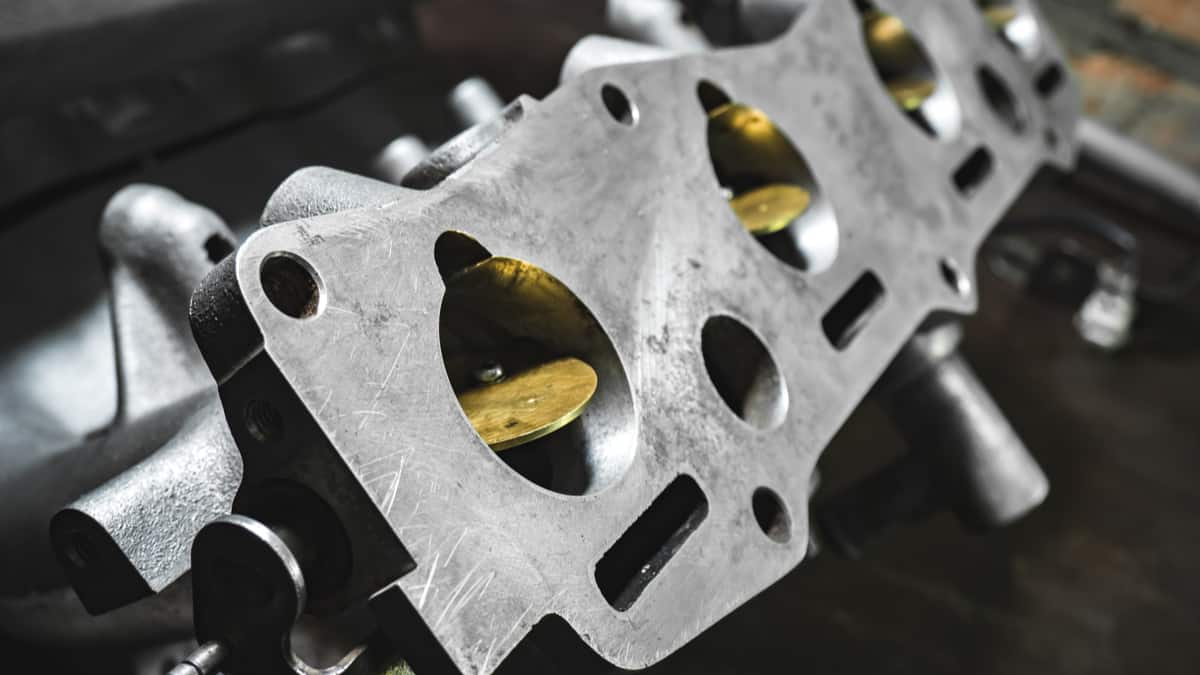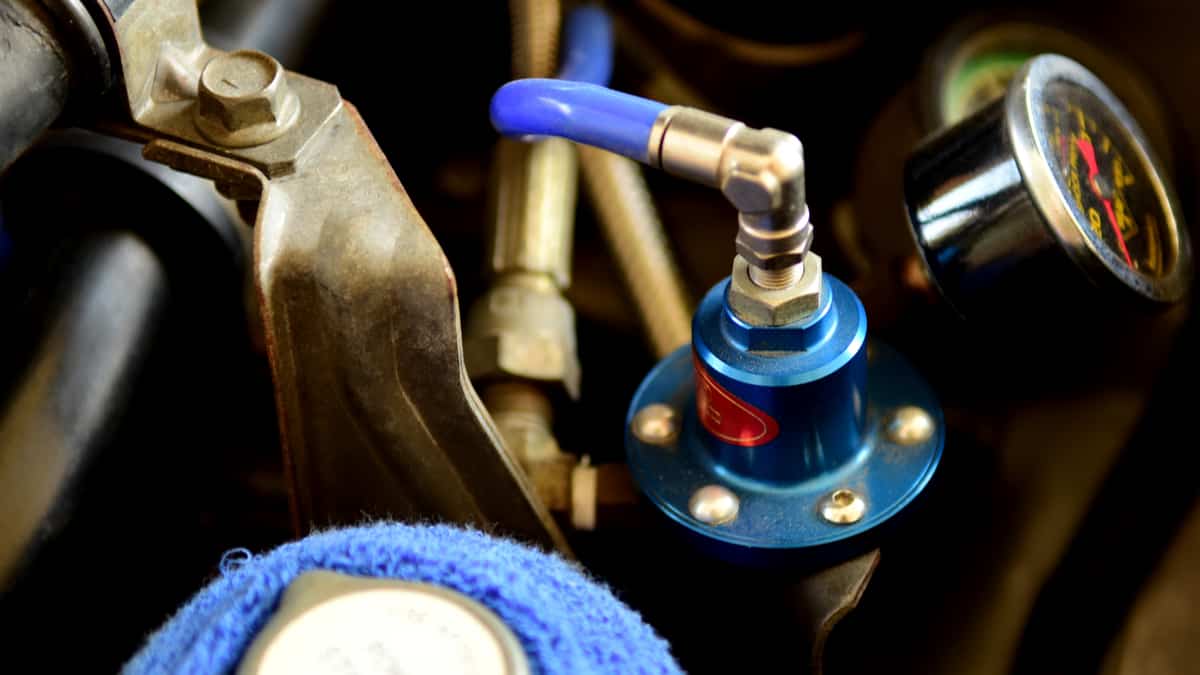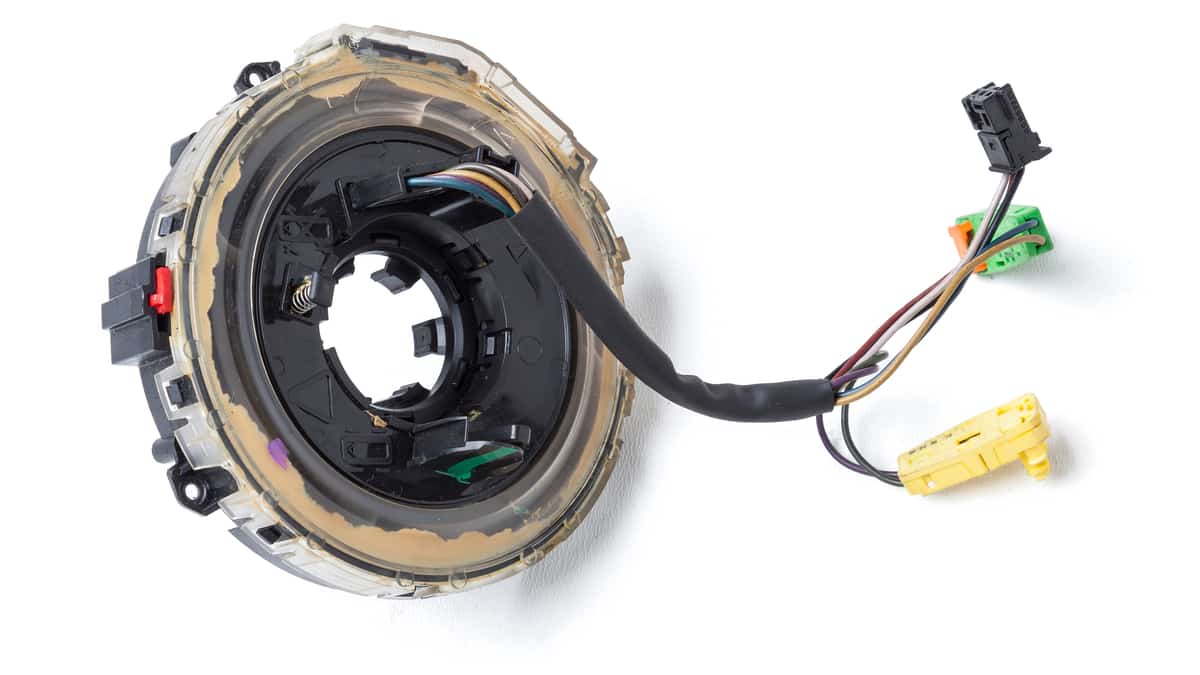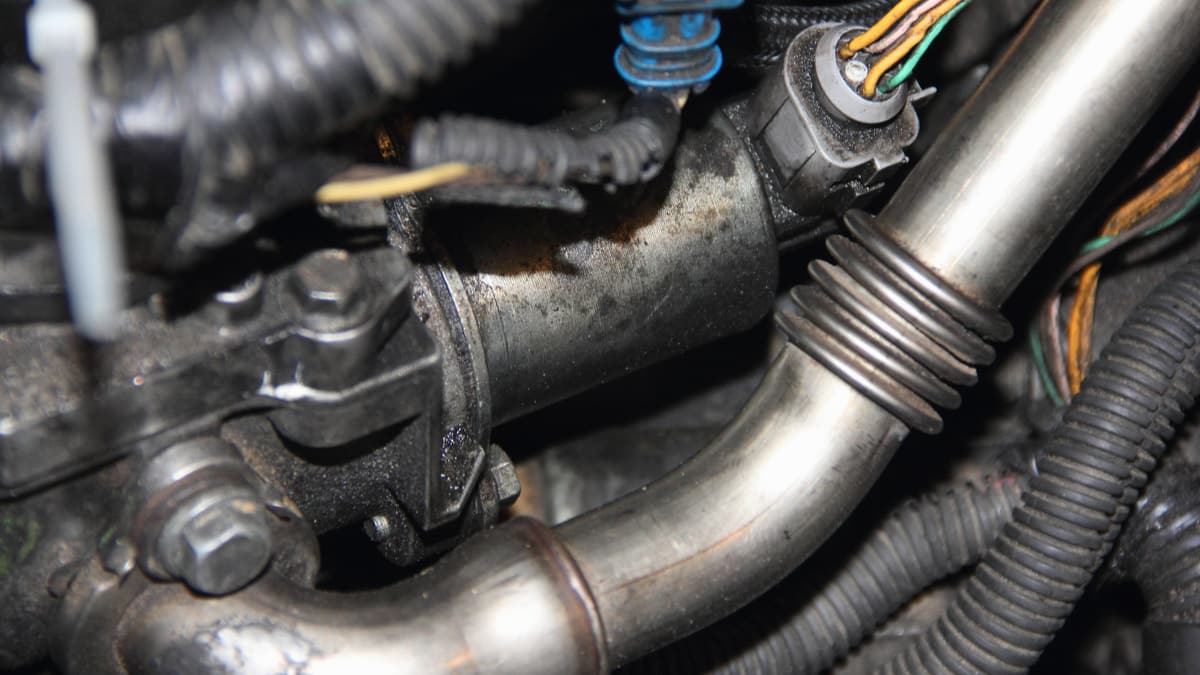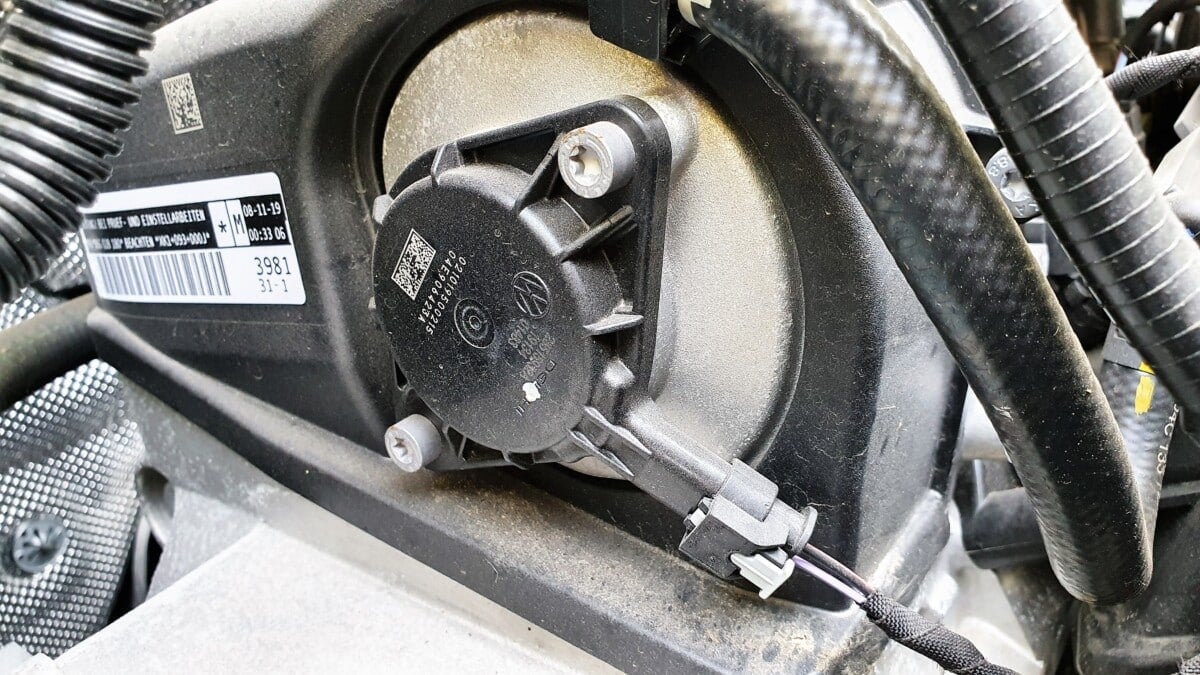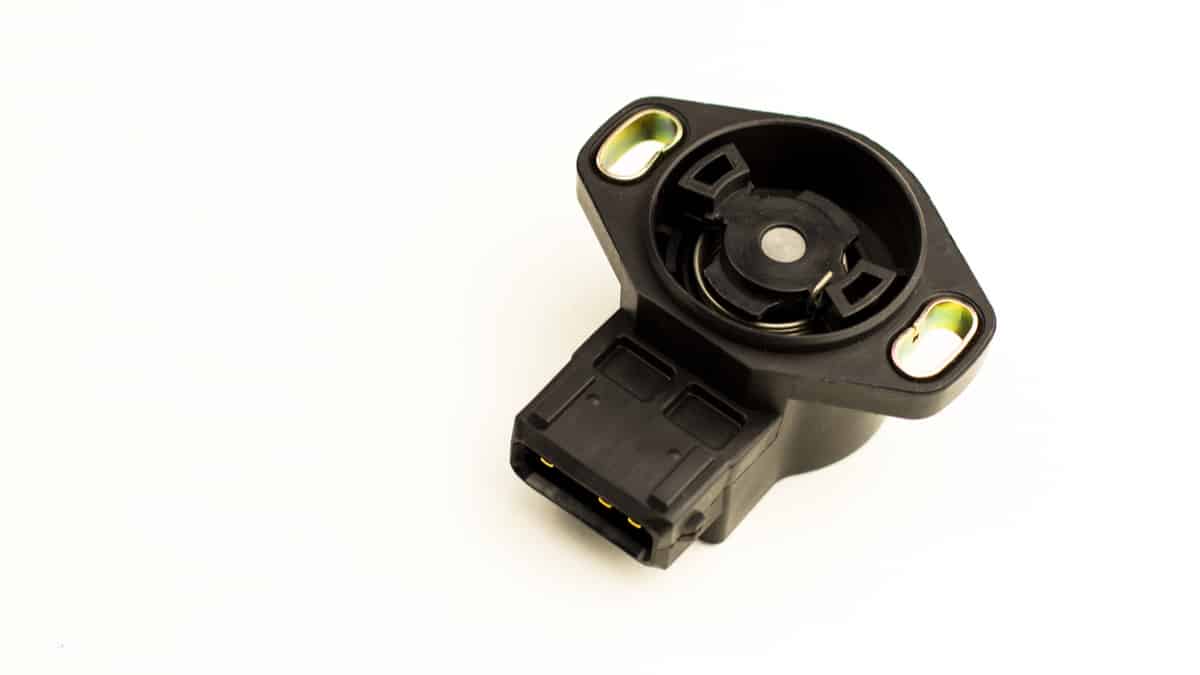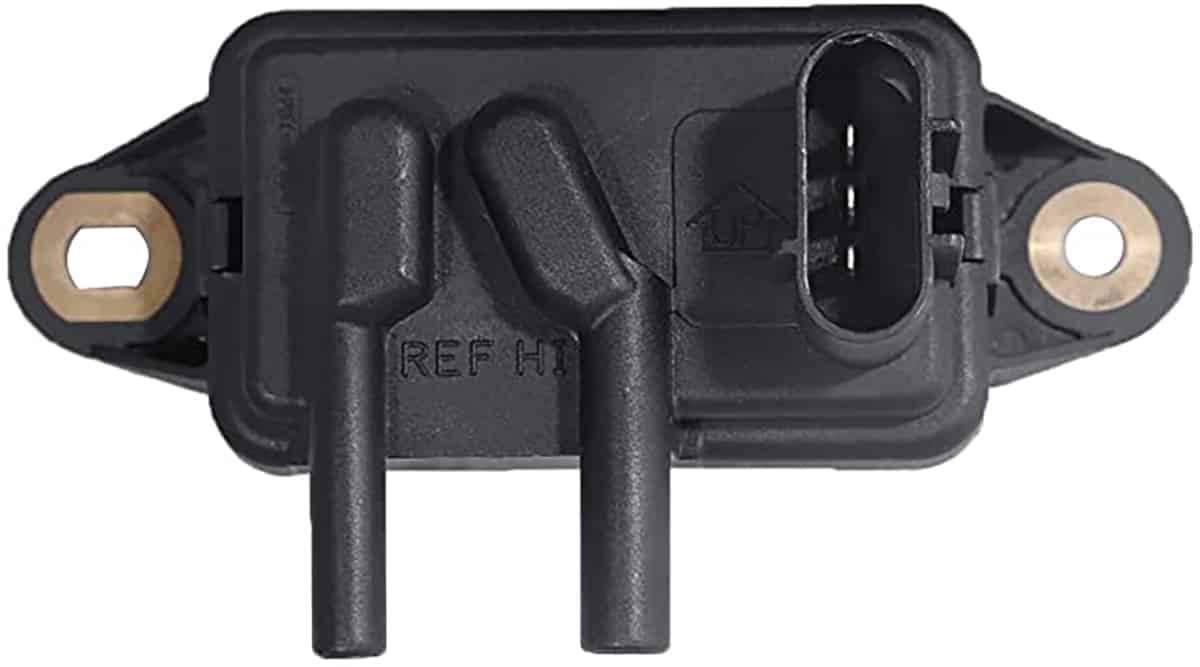Maybe you’ve never heard of an oil pressure sensor before. Or, maybe you have, but you have no idea what it is or how it works.
In this guide, we’re looking to not only inform you about what an oil pressure sensor is, but also to tell you some of the symptoms of a faulty one and how much it costs to replace it if yours is bad.
Your oil pressure sensor is a crucial part of your engine. So, how can you tell if it’s faulty and no longer working?
Symptoms Of A Bad Oil Pressure Sensor
The most common symptoms of a bad or failing oil pressure sensor are an oil pressure light on your dashboard, a noisy engine, or engine performance issues. You may also notice that the oil pressure sensor is leaking oil.
Here is a more detailed list of the signs of a bad or failing oil pressure sensor to look for:
1. Oil pressure light on dashboard
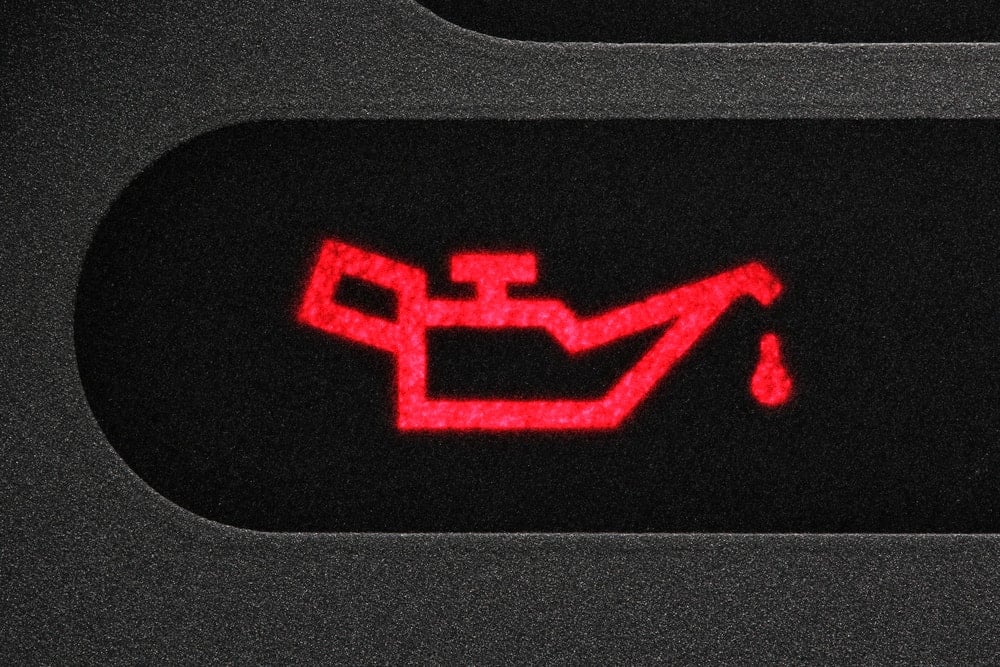
One of the most common symptoms of a faulty oil pressure sensor is your oil pressure light illuminating on your dash cluster. This light is illuminated when your oil pressure sensor detects low oil pressure or high oil pressure and then sends a signal to your ECU, which then passes a signal to your dash cluster, switching on your oil warning light.
This is how this system should work in theory. However, if your sensor is faulty, then it will switch the oil light on, even if the oil pressure is okay.
The easiest way to determine this fault is to manually check your oil pressure with an oil pressure gauge. If your oil pressure is normal, this indicates a faulty sensor. Another method of diagnosing this fault is to use a fault code reader and see if there are any stored faults in your vehicle’s ECU pertaining to your oil pressure sensor.
2. Noisy Timing Chain and Engine
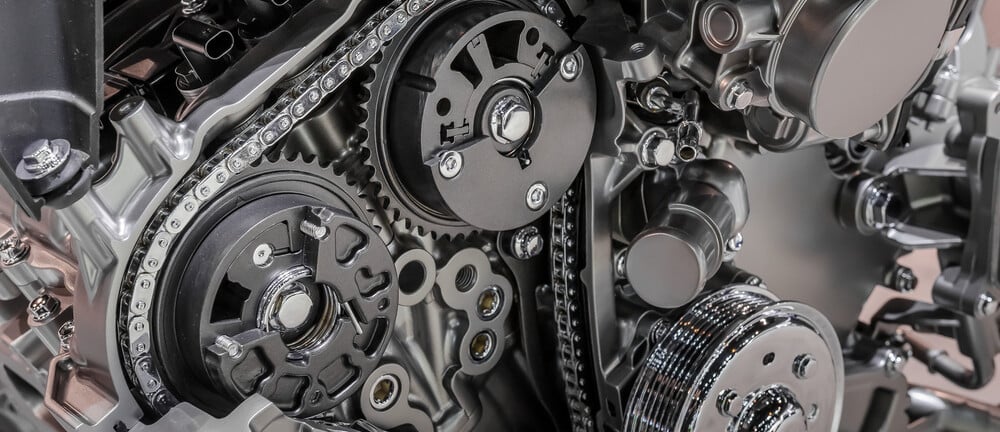
If your engine has a timing chain that is oil fed, then having the correct oil pressure is even more important. This is because your chain uses the oil pumped from your oil pump to keep itself lubricated and moving freely. The tensioners that hold the chain’s tension in place are also often oil fed, which again is another reason why maintaining oil pressure is vital.
If your engine oil pressure drops, this can cause your chain tensioners to slacken off, which leaves you with a loose chain that whips and gets thrown around against the various pulleys and housings. This is usually audible as you stand next to the vehicle while the engine is sat at idle. It will sound like a deep, metallic rattling noise coming from your engine block.
If you can hear this from your engine, but your oil light hasn’t come on, this can be a sign of a faulty oil pressure sensor. If your chain has lost its tension due to a lack of oil pressure, and your oil light hasn’t illuminated on your dash cluster, you should replace the oil pressure sensor after carrying out the necessary repairs on your engine to rectify the fault with the chain.
You may also experience other noisy engine parts if your oil pressure is low.
3. Oil Leak From Oil Pressure Sensor
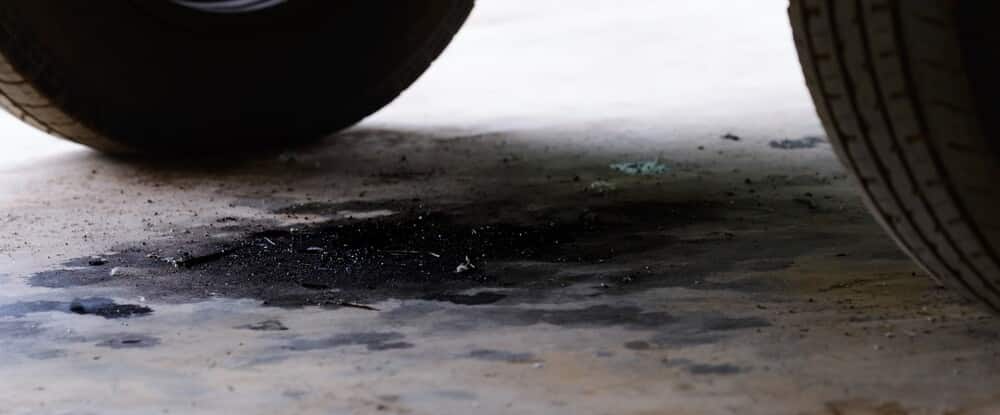
Your oil pressure sensor is designed to be sat in the oil system of your car so that it can detect the oil pressure. However, this can sometimes lead to your oil pressure leaking oil, either from the threads or through the center of the actual sensor itself.
Vauxhalls are known for having this as a common problem on some of their models. The oil pressure sensor leaks oil through the center of its body, filling the block connector and spraying the engine bay with oil.
You can easily diagnose this fault by checking for any oil leaks from around the pressure sensor. Remove the sensor’s block connector to check inside for oil. If you find any oil in either of these locations, then you’ll need to replace your sensor. You can also visually inspect the sensor whilst the engine is idling and make sure there’s no sign of any oil leaking from the sensor body.
What is an Oil Pressure Sensor?

Most modern cars have an oil pressure sensor fitted somewhere on the engine block. This sensor allows the vehicle’s ECU to determine the – yep, you guessed it – running pressure of the oil within the engine.
This allows the engine to passively monitor whether the oil system loses pressure. If for whatever reason, your engine does lose its oil pressure, this can result in major damage to the rest of your engine, which is the main reason that it is constantly monitored.
The pressure is created by your vehicle’s oil pump, which simply lifts the engine oil from your sump to the head of your engine to both cool and lubricate the various engine components. If the oil pressure drops, then your engine is no longer able to stay lubricated or cooled effectively, and this can result in components seizing, causing irreversible damage and a heavy repair bill.
This is the main reason why your oil pressure is constantly monitored. So, as soon as your oil pressure light comes on, switch off the engine and don’t restart until it’s been repaired. By doing this, you’ll prevent further damage from taking place.
Oil Pressure Sensor Location
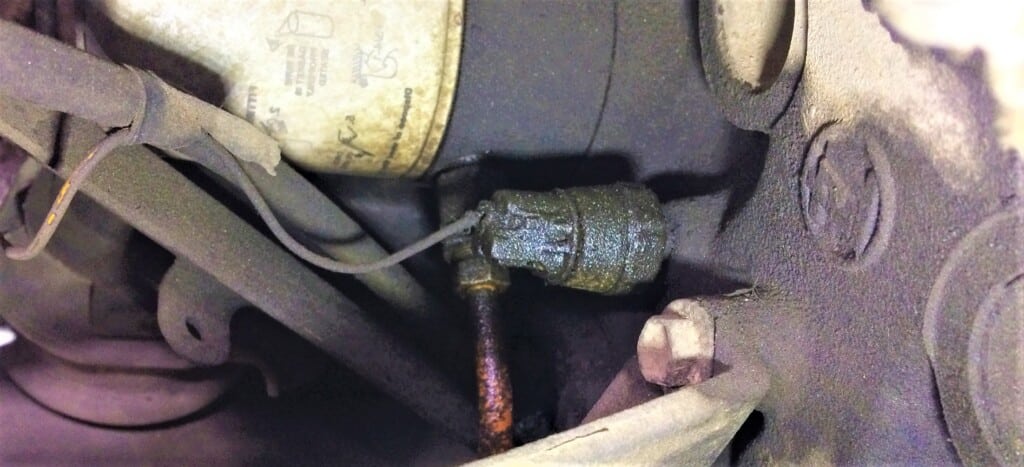
The exact location of your oil pressure sensor can vary depending on your make, model and engine.
The oil pressure sensor is often located in the engine block near the bottom of the cylinder head. But it can also be installed on the cylinder head. It will have a block connector attached to it, and have 1 or 2 thin wires attached.
Oil Pressure Sensor Replacement Cost
The average oil pressure sensor replacement cost is between $50 and $250, depending on the car model and labor costs. An oil pressure sensor costs $30 to $100, and the labor costs $20 to $150.
The cost for an oil pressure sensor will depend entirely on your vehicle’s specific product number for the part, but you can expect to pay anything from $5–$100. Fortunately, if you want to pay someone to fit it, labor will usually only be between 30 Minutes–1 Hour, depending on where the sensor is located.
Diagnosing a faulty oil pressure sensor
Diagnosing a faulty oil pressure sensor is often pretty straightforward if you have the sensor’s correct measurements. The sensor does often have just one or two pins, which should have a specific resistance to ground. To know the exact resistance you need at a given oil pressure, you need to check your repair manual or the oil pressure sensor manufacturer’s manuals.
Can you drive with a faulty oil pressure sensor?
If you have a faulty oil pressure sensor, it is best to replace it as soon as possible. The oil pressure sensor is responsible for monitoring the oil pressure in the engine and acting as a warning system if the pressure gets too low. This can help to prevent engine damage caused by low oil pressure. While you can drive with a faulty oil pressure sensor, it is not advisable to do so since there is a risk of engine damage if you can’t see when the oil pressure is low.
How long do oil pressure sensors last?
Oil pressure sensors are designed to last a long time – typically, the lifetime of the vehicle on most car models. It is also quite rare that they wear out. However, like any other component in your car, they can eventually fail.
How long does it take to replace an oil pressure sensor?
It depends on the make and model of your vehicle, but generally speaking, it shouldn’t take more than 1 hour to replace an oil pressure sensor. However, if you’re not familiar with working on cars, it can take longer, and it’s always best to consult a professional mechanic to make sure the job is done correctly.
How do I reset my oil pressure sensor?
There is no way to reset a normal oil pressure sensor. After you install the new one, just start the car engine. If everything else is good and there are no other issues with the oil pressure or wirings, and you should see the oil pressure light disappear.
Due to the oil sensor’s simple design, they tend to be fairly cheap to pick up and easy to replace. Just be careful that you watch for oil leaking out as you remove the sensor from the engine block. You’ll also want to be careful that you don’t over-tighten your new sensor, as this is an easy mistake to make.
Any time you work on a part of your engine that involves oil, it’s always best to wear gloves to protect your skin from the harmful chemicals that are built into the oil. Also, once the work is completed, check your oil level with your vehicle sitting on a flat, level surface and top up if required.
Learn more:
- Engine Ticking Noise? (Causes & How to Fix it)
- Oil Pressure Low at Idle – Common Causes & How to Fix
- Oil Leak Repair Cost – Common Causes & How to Repair It
Categories: Engine, Engine Oil
